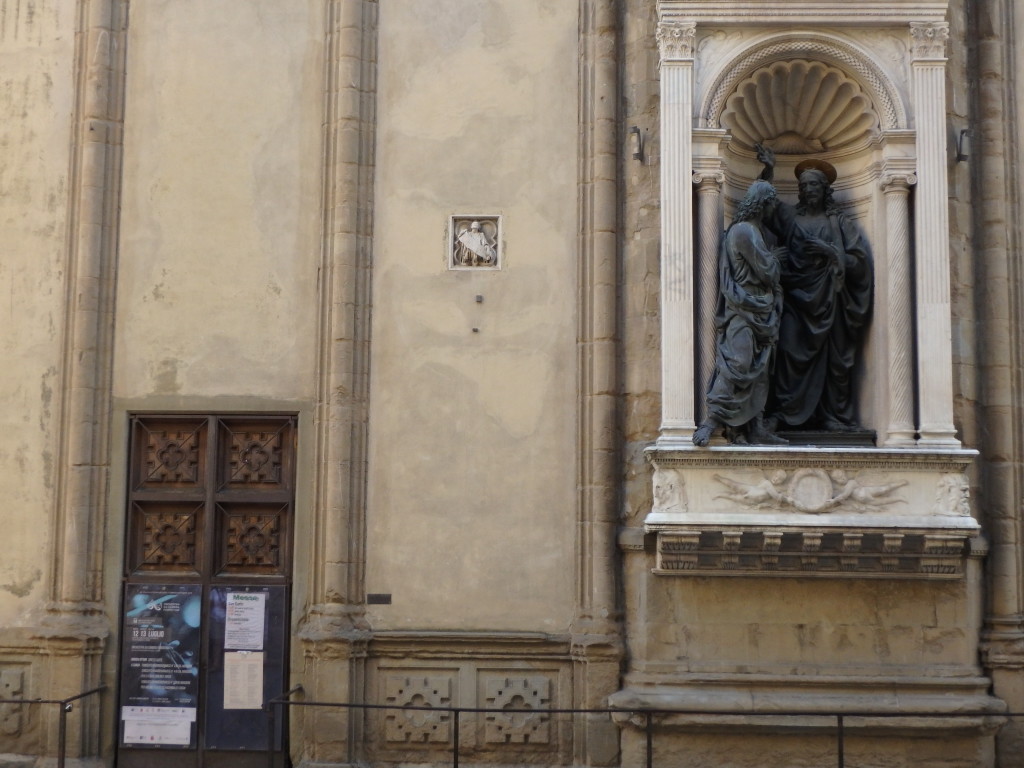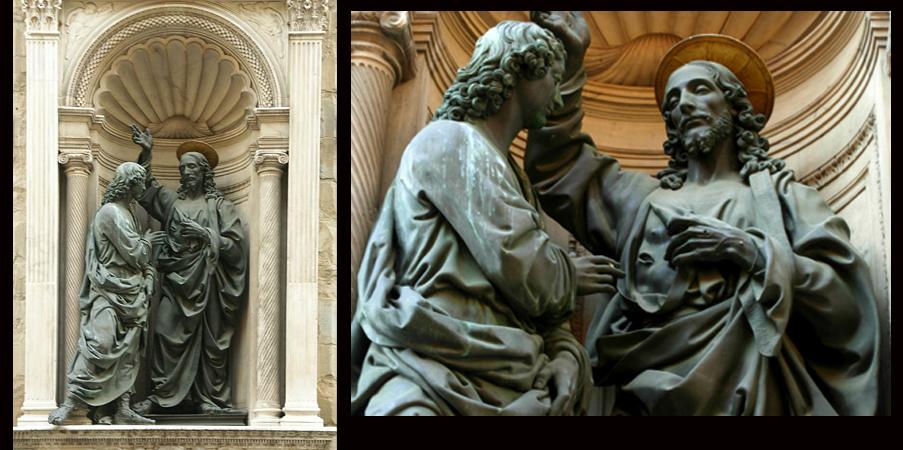http://preferredmode.com/tag/jewelry/  Our first stop on our little trip through Italy was Florence. There are new fast trains from Rome to Florence which arrive in less than an hour and a half. Before we knew it we were lugging our bags past Santa Maria Novella and over the Arno to our guesthouse.
Our first stop on our little trip through Italy was Florence. There are new fast trains from Rome to Florence which arrive in less than an hour and a half. Before we knew it we were lugging our bags past Santa Maria Novella and over the Arno to our guesthouse.
buy provigil online in canada I have to admit that Florence is not a place I really look forward to going to. Catherine really wanted to see it (she had never been there), so we were going to go; but even twenty years ago people were calling the place “Disneyland Rinascimento,” and at times it really does feel just like that – a Renaissance-themed Disneyland. In summer, on the streets in the center of town, there are probably twenty tourists for every resident. You hear all the languages of the wealthy of the world – Arabic, Japanese, French, German, Chinese, Spanish, Dutch, Russian, English most of all – but so little Italian. It’s enough to make even the most naive tourist a little self-conscious. Even Santa Maria del Fiore, the vast and ambitious cathedral at the heart of town which is always surrounded now by vast lines of tourists trying to get in, looks somehow fake and saccharine and (to me) silly: its exterior is all red white and green marble, as if Willy Wonka had intended it as the centerpiece of a theme park: the Candy-Cane Cathedral.
Then there is the shopping-mall aspect of the place. I’m sure I literally don’t even know the half of it, because I don’t recognize the names of these stores, which I’m sure are very alta-moda and very expensive. But I do recognize some of the stores with shops there: Coach and Dolce & Gabbana and Louis Vuitton (I still don’t know how to pronounce that last name, nor do I want to know) and Abercrombie & Fitch and Swarovski and many others. On the Piazza della Signoria where Savanarola held the Bonfire of the Vanities, Gucci has not only a store but a whole museum dedicated to Gucci.
But I’ll admit that even though I’ll never own anything from any of these stores it is kind of fun every once in awhile to people-watch outside of them, and people do legitimately seem happy when they’re shopping, and I do like happy people. And then there’s the art. Walking down the Via dei Calzauoli from the Candy Cane place, you walk past a Disney Store and a Stefanel and just before you get to the Occitane, there’s Verrocchio’s Doubting of Saint Thomas. There it is, just in a niche, right there. Actually I’m pretty sure it’s a copy but it’s a superb copy, a million-dollar copy with everything but the patina, which it’s slowly developing.
I have a special place in my heart for this piece. Of course there are the obvious theological reasons: there are crazy religious people, some of them even Catholics, who in a million years would never think to put the words “doubting” and “saint” together. That Christ could accept so blasphemous and complete a doubt – a doubt that insists on sensory evidence – and that the Church could canonize such arrant dubitation, suggests a Christ and a Church more accepting and capacious than these people would ever want to be part of. It’s one of those parts of the Christian story, present from the very beginning, which a certain sort of mind blocks out.
This statue traveled to New York in 1993, and I was lucky enough to see it then. In fact, our theology teacher, Anthony Conti, thought it was so important he pulled us out of class to visit it. (I really cannot complain about my education, I suppose). We looked at it from different angles, looked at the faces, contemplated what it all meant. From one side Thomas’s body looks like a wedge and Christ seems to bend around it, as if being pierced again; from the other side Christ looms over Thomas, his hand raised almost as if to strike him down. Christ’s face is a masterpiece of modeling, equally suggestive of forgiveness and disappointment. The angling of Thomas’s body suggests excitement about his opportunity, but the strange angle of his arm shows his hesitation. At the very center of the composition is the wound in Christ’s side, out of which poured the blood and the water. It is a gap in the bronze. I remember Mr. Conti looking at that wound – he was a man of a kind of C.S. Lewis-type honesty in his Christianity – for a long time, before he said, “That hole looks like it could swallow him up.” It was a statement that was obviously literally false: it was meant to have a meaning.
Andrea del Verrocchio is one of the many Florentine artists that one discovers in time – the unpopular artists, the artists who don’t get the crowds that Botticelli and Michelangelo and Leonardo get. Florence is filled with their work, and they are one of the main things that makes Florence so lovely and so worth returning to, even if you don’t know what Dolce & Gabbana actually sells.
And Botticelli and Michelangelo and Leonardo are lovely – if you accept that crowds now come with them.

Post a Comment